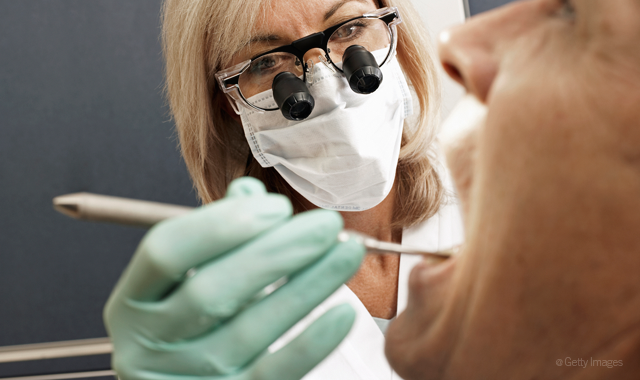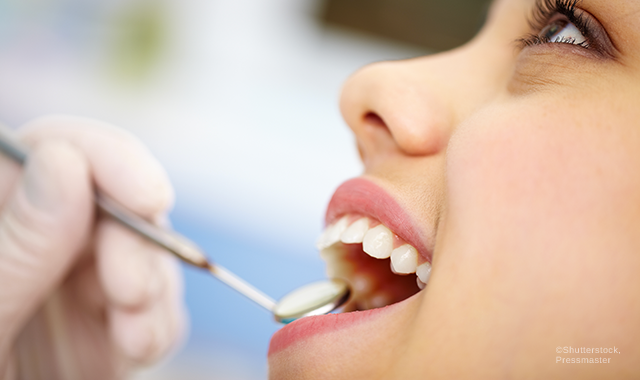4 Life-Saving New Year’s Resolutions
Check out these four ways hygienists can save a life in 2019 by utilizing their skills and passions.
As the Christmas decorations come down and we begin to adjust to a new year, I know many of us are adhering to (or already letting go of) New Year’s resolutions. What better time than the beginning of a new year to truly turn over a new leaf and step into an improved version of yourself?
While many of us are resolving to go to the gym more frequently, meal prep with healthy meals, schedule 10 minutes of meditation, or work on using the doggie door more frequently (that is my dog, Baxter’s, resolution by the way), I’m thinking about how I can show up as a better clinician for my patients.
More from the author: Are you suffering from burnout?

Research is continuously generating compelling data regarding the importance of our role as dental hygienists, and with this data comes greater responsibility. The oral-systemic link is oftent used as the “cherry on top” of a periodontal treatment plan: “…and another benefit to getting rid of that bacteria, Bob, is that it will reduce your risk of heart disease, stroke, upper respiratory tract infections…”
While we understand the role that periodontitis holds amongst various co-morbidities, our skills in understanding chronic disease goes beyond that of periodontitis. It’s important that we understand the scope of our practice, the empirical evidence and our responsibility to bring life-threatening disorders to the front of our patient care.
So, let’s resolve to step into this beautiful responsibility and truly improve the lives of our patients! I’ve prepared the four ways YOU can save a life in 2019 with your brilliance, your knowledge, your skills and your passions.
Click through the slides to find out the New Year's resolutions.


Sleep disorders
The research is continuously mounting regarding the importance of early diagnosis for sleep disorders. Currently, approximately 22 million Americans suffer from sleep apnea, with an estimated 38,000 people who die annually from heart disease complications associated with sleep apnea. Gone are the days when we could lightheartedly laugh about our partner’s snoring, as we’re beginning to understand the ramifications of what happens when our vital organs are depleted of oxygen during rest.
As preventive specialists, we spend the better part of our hygiene hour staring down our patient’s throat; there’s truly no one better to screen for initial signs and symptoms of sleep disorders than us!
Read more: The rise of sleep apnea
During the patient interview, a clinician can begin the process of screening for sleep disorders. Patients who are taking medications or supplements to assist with sleeping are likely candidates of a sleep disorder. They may also report that their significant other complains of snoring, that they notice moments throughout the night when they awake gasping for air, or they don’t feel they receive a restful night’s sleep.
Initial examination can be done simply by evaluating the size of your patient’s neck, which can provide information about the size of your patient’s airway. Evaluating a Mallampati score will help further assess how obstructed the airway may be regarding the position of tonsils and the size of the tongue. While Mallampati score is traditionally used to assist surgeons in understanding the difficulty of intubation, it has also provided solid information about a greater incidence of sleep apnea.
Of note, any patient who presents with elevated blood pressure readings and notes any of the above signs and symptoms is an excellent candidate for a sleep study, as he or she displays the early signs of an untreated sleep disorder.



Gastroesophageal reflux disease
Not only are we experts in gingival and dental disease, we also have been highly trained to screen for other diseases that manifest themselves in the oral cavity. We all remember the iconic image of maxillary anterior erosion on our national boards examination, and hopefully we all confidently identified our patient as someone suffering from gastric reflux.
What began as a concern regarding the acidic oral environment, however, has escalated to a potentially life-threatening risk factor.
Trending article: 3 steps to developing healthy habits in the new year
New studies are identifying that patients with heart burn or gastric reflux disease present with an independent risk factor for cancers of the pharynx and larynx. Research1 has determined that acid not only etches the enamel surface of the dentition but also affects the lining of the oropharynx. Acidic damage to the cellular lining of the esophagus removes protective properties and renders the tissue highly susceptible for fast-growing cancerous cells.
The study concluded that patients who present with frequent heartburn were found to have a 78 percent increased risk for oropharyngeal cancers. Patients who had frequent heartburn but took a daily antacid were found to have a 41 percent increased risk for oropharyngeal cancers.
Needless to say, screening for gastric reflux disease has become increasingly imperative in reducing the risk of oropharyngeal cancers and can, in turn, save a life.



Infertility
It’s estimated that approximately 6.1 million American couples are currently struggling with infertility. For most, the financial investment, pain and challenges associated with fertility treatments are heart-wrenching.
Infertility is often a multi-factorial concern, and in turn, specialists work to manage everything from sleeping patterns to chemicals in the home and diet. One study suggests, however, that perhaps a toothbrush and some quality time in your dental chair may improve fertility results.
Related reading: Is periodontitis causing infertility in young women?
A 2017 study2 noted that patients experiencing infertility had a dramatically higher presence of Porphyromonas gingivalis than patients who became pregnant. This study indicates there’s a statistically significant correlation between the presence of this major periodontal pathogen and infertility.
In addition, we know that good ol’ Prevotella intermedia loves to join the party whenever sex hormones are present, and the presence of this periodontal pathogen may increase presence of periodontitis while increasing numbers of P. gingivalis.
Patients who are experiencing infertility may benefit from a supportive conversation in how to effectively reduce oral biofilm as well as a shortened hygiene recall interval.



Colon cancer
As the Western diet continues to “evolve,” patients are consuming less fiber and are, in turn, predisposed to disorders of the colon. Of note, more than 50,000 people die from colon cancer annually, and while a colonoscopy may detect early disease, your good ol’ Gracey 11/12 may help prevent colon cancer.
The periodontal pathogen Fusobacterium nucleatum is the bacteria that resides along the gingival margin and is responsible for the further adherence of the red-complex pathogens. Its affinity for warm and moist environments has led researchers to inquire about the presence of F. nucleatum in the human colon.
More from the author: Dear dental insurance patient...
Specifically, a 2018 study3 identified that serum levels of F. nucleatum were found to be extremely high in colorectal adenomas and carcinomas when compared with normal colorectal tissues. While more research must be conducted to identify the link between active periodontitis and colorectal cancers, the compelling nature of a common periodontal pathogen being present in cancerous colons certainly creates an opportunity for dental professionals to educate their patients.
Patients who have had a history of polyps or precancerous lesions, a family history of colon cancer, or additional risk factors may benefit from more frequent hygiene therapies or perhaps host modulation therapy during periodontal therapy.



Conclusion
While I very much believe in stepping into a better version of ourselves for our patients, there’s one beautiful benefit to serving patients in a deeper way: we understand our significance as providers.
All too often I meet hygienists who are feeling the realness that comes with hygiene burnout, and I believe that for many hygienists, that “burnout” leads them to believe that they’ve fallen out of love with dental hygiene.
Trending article: Is there a bidirectional link between periodontitis and diabetes?
I believe, however, that the hourly (or 30-minute, in some cases) grind of being a “tooth cleaner” has led us to believe that is all we are able to contribute to our patients’ wellness.
We know better! We’re capable of so much more!
I’m confident that with a newfound awareness of how we, as professionals, can improve the quality of life or save a life, you’ll fall back in love with hygiene all over again.
So, glove up and get ready: it’s a beautiful year to save lives!
References
1. Langevin, S. et al. (2013). Gastric Reflux Is an Independent Risk Factor for Laryngopharyngeal Carcinoma. Cancer Epidemiol Biomarkers Prev. DOI: 10.1158/1055-9965.EPI-13-0183.
2. Paju, S., Oittinen, J., Haapala, H., Asikainen, S., Paavonen, J., & Pussinen, P. J. (2017). Porphyromonas gingivalis may interfere with conception in women. Journal of oral microbiology, 9(1), 1330644. doi:10.1080/20002297.2017.1330644.
3. Shang, F. M., & Liu, H. L. (2018). Fusobacterium nucleatum and colorectal cancer: A review. World journal of gastrointestinal oncology, 10(3), 71-81.
